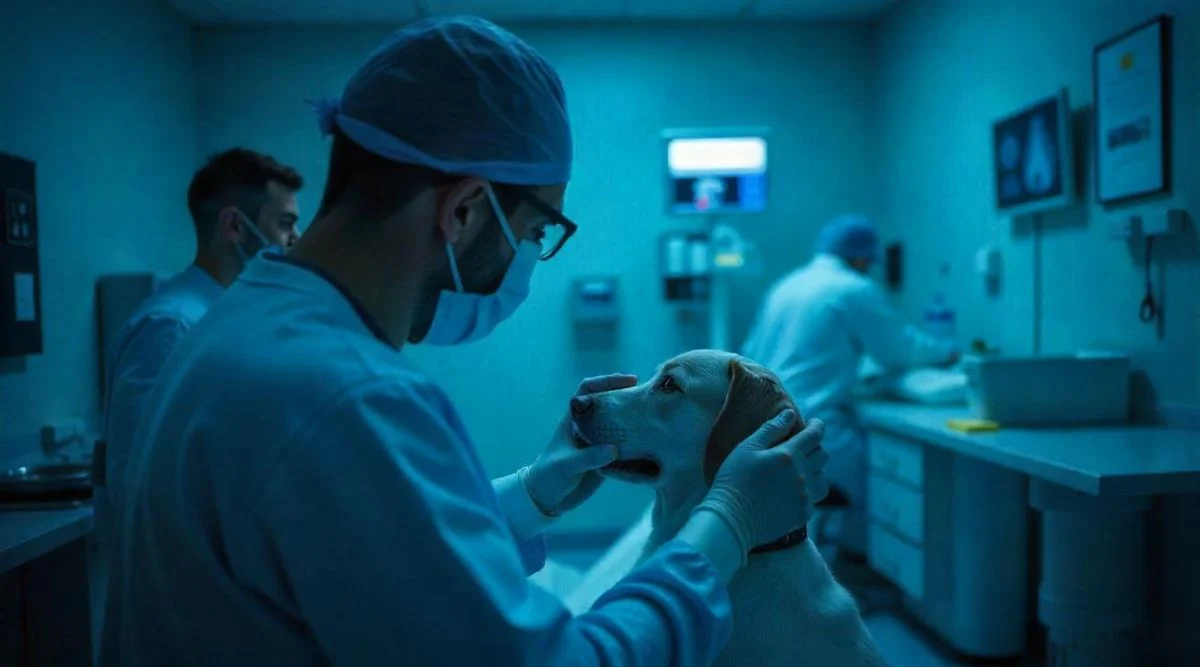Streptococcus is of two kinds. One is Streptococcus canis, and the other is Streptococcus dysgalactiae. Streptococcus was first identified in dogs and hence, got the name of Streptococcus canis. It is a bacterium that is important to a dog’s mucosal health and its skin. However, under certain conditions, this bacteria causes infections. These infections are usually curable with proper and immediate treatment.
Streptococcus is what happens when your dog’s immune system has been compromised, and bacterial infection has occurred. The Streptococcus bacteria is already present in the body, and when there is a recent illness, the Streptococcus canis bacteria can lead to infections.
Streptococcus is caused by a natural bacteria that is usually found in the respiratory system, urinary and genital tracts, and the intestines. This bacterial infection is quite common in puppies who have not yet built a strong immune system and in the older dogs whose immune systems have become weak.
Causes of Streptococcus in dogs
- A weak immune system
- Sores on the skin that have remained untreated
- Puppies that do not have antibodies and have not had their shots
- Contact with animals that have Streptococcus
Symptoms of Streptococcus in dogs
There are a few symptoms that indicate Streptococcus. They include high blood pressure, infected cuts and sores on the skin, cough, nasal discharge, vomiting, lack of appetite, infection in the respiratory system, infection of the urinary tract, walking difficulties, lethargy and extreme sleepiness, etc.
If your dog is infected with Streptococcus, it can also cause abortion, cellulitis and problems in the neonatal stage with sepsis.
Types of Streptococcus in dogs
Skin infections: This causes lesions and abscesses on the skin and can be anywhere on the body.
Throat infection: Causes your dog a lot of pain while eating and leads to a refusal of food and water.
Urinary tract infections: You will see blood in the urine, your dog will have a lot of pain while urinating, and there will be an increased frequency of urination
Respiratory system infection: Causes vomiting, coughing, fever, and difficulty in breathing.
Sinus infections: Your dog will have watery eyes and a runny nose.
Diagnosis of Streptococcus in dogs
A diagnosis of Streptococcus canis will largely depend on the symptoms. Your dog’s vet will need the entire medical history and a physical exam. The diagnosis will also include a complete blood count, blood gas and chemical panel, bacterial culture, fungal culture, throat swab, nasal swab, urine test, skin scrapes and biopsy, and a test for allergies.
If your dog’s Streptococcus has spread all over the body, an x-ray will be required. Your dog may also require an ultrasound, CT scan, and an MRI. If the vet needs to rule out heart diseases, an ECG may be necessary.
Apart from these tests, your dog may have to undergo an endoscopy and laryngoscopy. While being extensive, these tests will help your dog’s vet arrive at an accurate diagnosis so that the treatment can get started.
Treatment of Streptococcus canis in dogs
The treatment will depend on the location of the Streptococcus canis on your dog’s body. Once the vet has located the area of infection, your dog may need to be hospitalized and fed intravenously with fluids and antibiotics.
Infection on the skin will require an application of topical antibiotics, and this will be for a few days. Your dog will not need to be hospitalized and can come home with you with a course of antibiotics along with other medicines. It is essential to follow the dosage instructions carefully so that the infection is completely erased. The course of antibiotics must not be stopped mid-way because that will lead to a recurrence of the condition and will in fact, be worse than before.
Recovery from Streptococcus canis in dogs
Once the dog has been prescribed a particular treatment plan, it is necessary to make follow-up appointments with your dog’s vet. The medical examination, including all the tests, will be required to make sure that the bacterial infection has left your dog’s body completely.
As always and in particular, your dog must be given high-quality food and fresh water during this time. It is preferable to use only stainless steel bowls. Make sure that your dog gets plenty of fresh air and exercise. Watch your dog carefully to ensure that the Streptococcus is not getting worse. If you follow the instructions from the vet and are careful with the required medication, your dog should recover fully in a week’s time.
Bacteria is all around us, and normally, they do not make an impact on our lives. This is true of dogs, as well. As long as the immune system is able to fight the onset of infections, all is well. But, in some cases, dogs’ immune systems are unable to fight back, and the infection spreads rapidly and causes illnesses.
What can you do as a pet parent?
As a pet parent, you can ensure that your dog has a strong immune system and is healthy enough to fight bacterial infections. Ideally, it is best to avoid overcrowded environments and contact with other infected dogs. Other than these, there are no proven measures to prevent Streptococcus in dogs.
Disclaimer:
The information contained in VOSD Vet Advice™ is not intended nor implied to be a substitute for professional medical action which is provided by your vet. You assume full responsibility for how you choose to use this information. For any emergency situation related to a dog’s health, please visit the nearest veterinary clinic.





